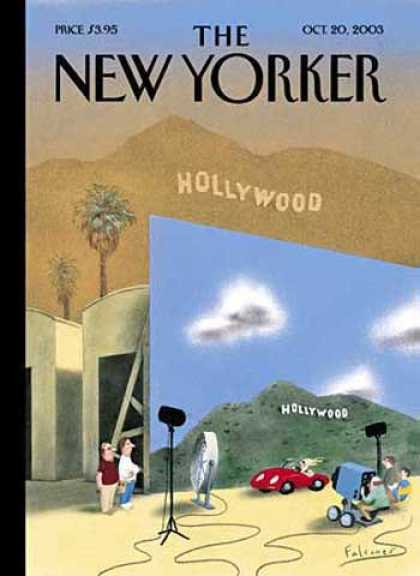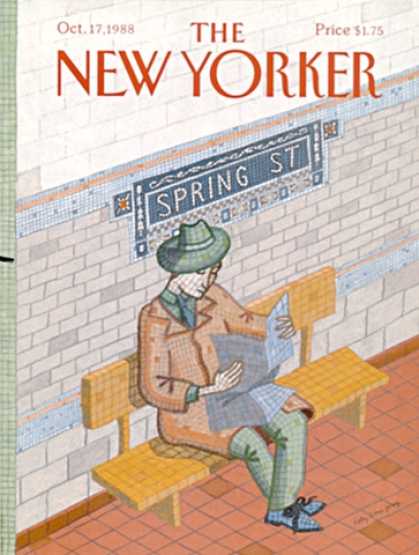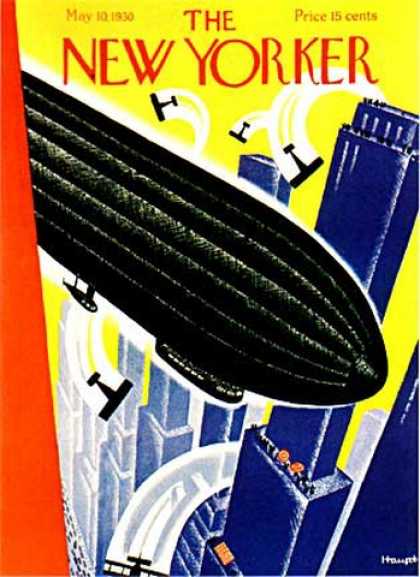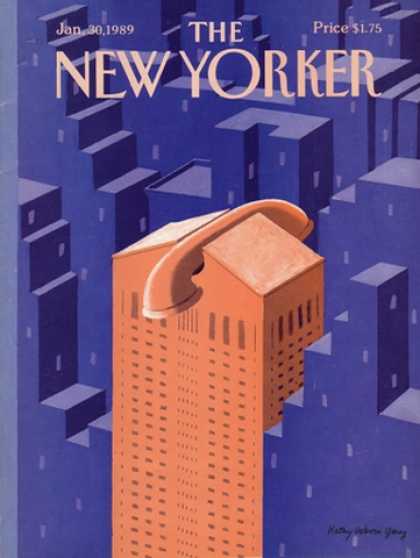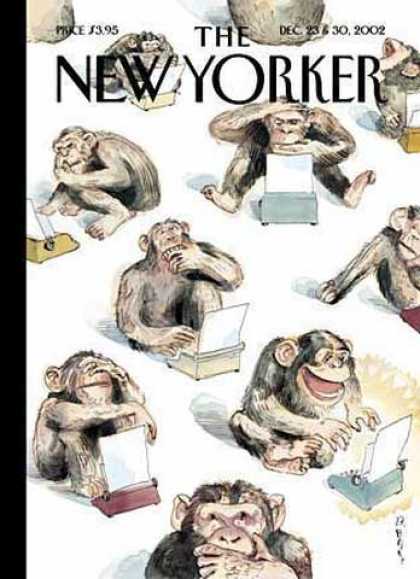During the 20th and 21st centuries America has been making a gradual decline towards purely suburban culture. In the article “The Public Realm and the Common Good” author Kunstler talks about how people once valued beautiful buildings and city streets that are public, and now we value the efficiency of which we can buy things. I agree with this because where once you could walk down a city street and have it be a beautiful and culturally fulfilling place, we now have strip malls and traffic jammed streets with little or no sidewalks. In looking at various New Yorker covers from the 20th century into the 21st century it is clear to see Americans’ discomfort and aversion towards this decline.
The article “The Public Realm and the Common Good” written by James Howard Kunstler describes in detail how people have a “homesickness” for how life used to be. Kunstler talks about how the only reason people love Disney World, whether they realize this or not, is because it is built to resemble a time when cars weren’t the main use of the city street. By putting in lampposts, benches, and tall and ornate looking buildings, Disney World managed to create a world that is lost to America. The fall of Euro Disney, according to Kunstler, was caused by the fact that European streets and buildings still maintain their integrity and therefore people don’t need to pay money to experience it. Another interesting point brought up by Kunstler was the fact that buildings in America nowadays have a design-life, which means that “our houses, commercial, and civic buildings are constructed with the fully conscious certainty that they will disintegrate in a few decades”. This shows how our idea of quality craftsmanship has severely declined, because in earlier times buildings were built to last.
In the July 22nd 1974 cover of the New Yorker, what is being portrayed is an old city street reflected in the windows of a modern day building. The old architecture is also shown as melting away and distorted. This relates back to the article because Kunstler talked about how old buildings are being knocked down and replaced with meaningless places such as strip malls. By showing the old architecture as a distorted reflection in a modern building, the artist is making an allusion to the fact that the old way of living is being taken away to make way for a newer and less beautiful way of living. This cover shows an almost apocalyptic view of new architecture in the red orange and yellow color scheme and makes it seem like America is burning down what we used to value, and what can now only be found in Disney World.
The New Yorker cover from June 11th 2001 shows what appear to be a real estate agent and a couple standing on a balcony of a city building. The couple is looking out longingly at an area outside of the city which is a suburban area. This is the only area of the cover which is colored in while the city and its inhabitants are shown in black and white. What struck me about this cover is that the couple completely overlooks the beautiful architecture of the city and is completely fixated on the suburban complex in the distance. This relates to what Kunstler said in his article about how people are no longer referred to as citizens, and how we are now consumers. The people in this cover are the perfect example of consumers because unlike citizens they don’t want to live in the public realm or contribute to the common good, they simply want to fulfill their skewed version of the American dream.
The final cover I am going to talk about is one from April 23rd 2007. This cover is a picture of a city, and the only colorful part of the city is the masses of people and their umbrellas. This cover proves Kunstler’s point because it shows how the architecture, cars, and sidewalks all have this dulling sameness and lack of color or beauty. The pop of color shown in the people with the umbrellas, however, show how people themselves still hold on to the values of beauty and cultural fulfillment. If those values could get translated back to the way we build our cities and towns, there could be hope for bringing back the way we once lived. Even though Kunstler says that “Americans have a low regard for the public realm, and this is unfortunate because the public realm is the physical manifestation of the common good”, I believe that Americans still have somewhat of a regard for the public realm as shown in this cover, and that is why people turn to Disney World to get a glimpse of it.
By looking at both Kunstler’s article and the various New Yorker covers, it is obvious that America has experienced a decline in our public realm. Where we could be building beautiful buildings that last, we create cheap cement structures that don’t even last our lifetime. By destroying what we once valued in an area we are making way for a new and skewed view of the American dream. The reason we turn to Disney world as a comfort is because Disney World holds the promise for what we wished we had in our society.

